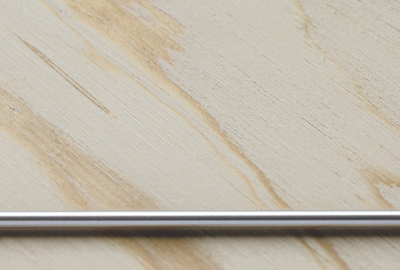Science
Accuracy and Calibration of FireBoard Thermometers
In order to design and manufacture thermometers that read accurately and precisely, the engineers at FireBoard use an impressive collection of precision instruments. One example is a Keysight 34465A which measures up to six and a half digits, allowing them to detect inconsistencies in components or prove that they are within spec. They also use a bank of high precision liquid test baths for thermal calibration. FireBoard also has their equipment regularly calibrated by an outside lab using equipment following a NIST chain of certification.

Fluke’s 714B Thermocouple Calibrator performs calibration of a FireBoard Pro
NIST
NIST, or the National Institute of Standards and Technology is a federal agency within the US Department of Commerce. Started in 1901 by an act of Congress, the purpose of NIST was to establish reputable standards of measurement at a time in U.S. history when rival countries had a better reputation in the world for standards, weights and measures. The story is a fascinating one. Be sure to visit their site to learn more about the scope and reach of this government agency. Today NIST gives certification to a wide variety of measuring equipment including scales, force gauges and thermometers.

A Hart Scientific 6024, one of FireBoard’s high precision calibration baths.
Certification from NIST is the gold standard for certification thus any legitimate certification certificate should be NIST traceable. The equipment that FireBoard is using to calibrate their thermometers has been certified by a laboratory that uses NIST certified equipment. (John Cleary’s team at CMC Calibration in Farley, MO has been great to work with over the years!)

Annual calibration is key to FireBoard’s quality. This sticker on FireBoard’s Fluke 289 True RMS multimeter is due to be sent out in a couple of months.
In some cases, companies may want to audit their calibration certificate in order to verify each link in the chain can actually trace back to a NIST primary standard. While in the process of writing this blog post, we decided to examine our certificate issued on our Fluke 289. At the time of this writing, our “reverse traceability report” is still being created, but as seen below, the chain flows from NIST all the way down to an actual FireBoard 2 Thermometer!

The FireBoard to NIST chain of certification, at the time this article was written. This table will be updated as the Certification Isssuers report back.

Both the Spark and the FireBoard Pro ship with certificates that document when the Thermocouple was calibrated.

All Sparks ship with a certificate of calibration.
Why and When to Calibrate Your Thermometer
Given that FireBoard calibrates every thermometer before it ships, it is a fair assessment that their units are accurate right out of the box. If you are experiencing some unusual readings with your FireBoard, be sure to visit their Knowledge Base to seek out some explanations.
Tech issues aside, there are some good practices to employ to get the best temperature reading. Avoiding bones or connective tissue that will read at a different temperature, and consistently reading the same portion of the same piece of meat, is an important start. Not to mention a solid understanding of the temperature differences of your cooking surface. Nothing is perfect, and grills are no exception, subtle to overt temperature differences in the cooking area of some of the most expensive grilles are not uncommon.

A custom-built device used to simultaneously test six thermometer ports.

Boiling Water Test
Taking the temperature of boiling water is a relatively easy way of checking a thermometer for accuracy, as water’s temperature stabilizes once it starts boiling. The boiling point of water is a little bit of a variable. This number is influenced by elevation and barometric pressure. Plug those numbers into this online calculator here.
According to my smart watch, today the barometric pressure is 1011.5 millibars and my elevation here in Kanas City is 783 feet. According to the online calculator, the boiling temperature of water should be 210.614ºF/99.230ºC which allows me to compare to our calibrated Spark digital instant-read thermometer. After bringing a saucepan of water to a rolling boil, stir the water with the probe. It is important to stay in the center of the pot and not let the probe touch the bottom or sides.

Rolling boil measured 210.4ºF which is within 0.2ºF of the theoretical 210.614°F actual temperature.
When I swirled my Spark’s probe in the center of the boiling water, the auto hold read 210.4ºF. Acceptable results for this test should be within +/- 0.7ºF or +/-0.4ºC, so the Spark passed this test with flying colors!
Ice Bath Test
The ice bath test is another, perhaps simpler, option for spot-checking the accuracy of a thermometer. To begin, fill a cup to the top with crushed ice, and then with water. The container needs to be large enough to stir the ice with the probe without hitting the container. Having as much ice as possible is the goal here. Give your icy water a minute or two to cool the water down and then slowly stir the mixture with the probe of your thermometer. As in the boiling water test you want to read from the center of the container. Your reading should be within +/- 0.7ºF of 32ºF or +/-0.4ºC of 0ºC.

My Spark measured within 0.1°F in the ice bath test!
While my Spark was solidly within spec in both of these tests, if you wanted to compensate your FireBoard based on one of these tests, the FireBoard Knowledge base walks you through the calibration process here.









Leave a reply